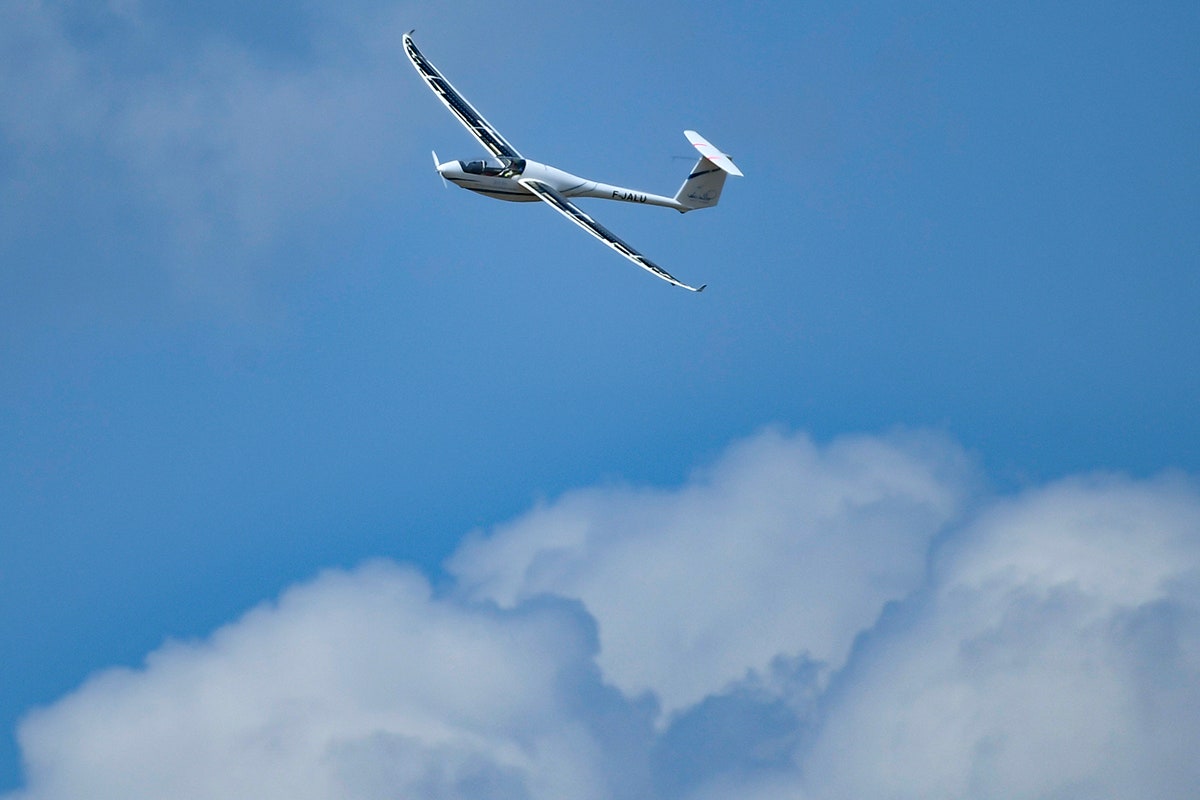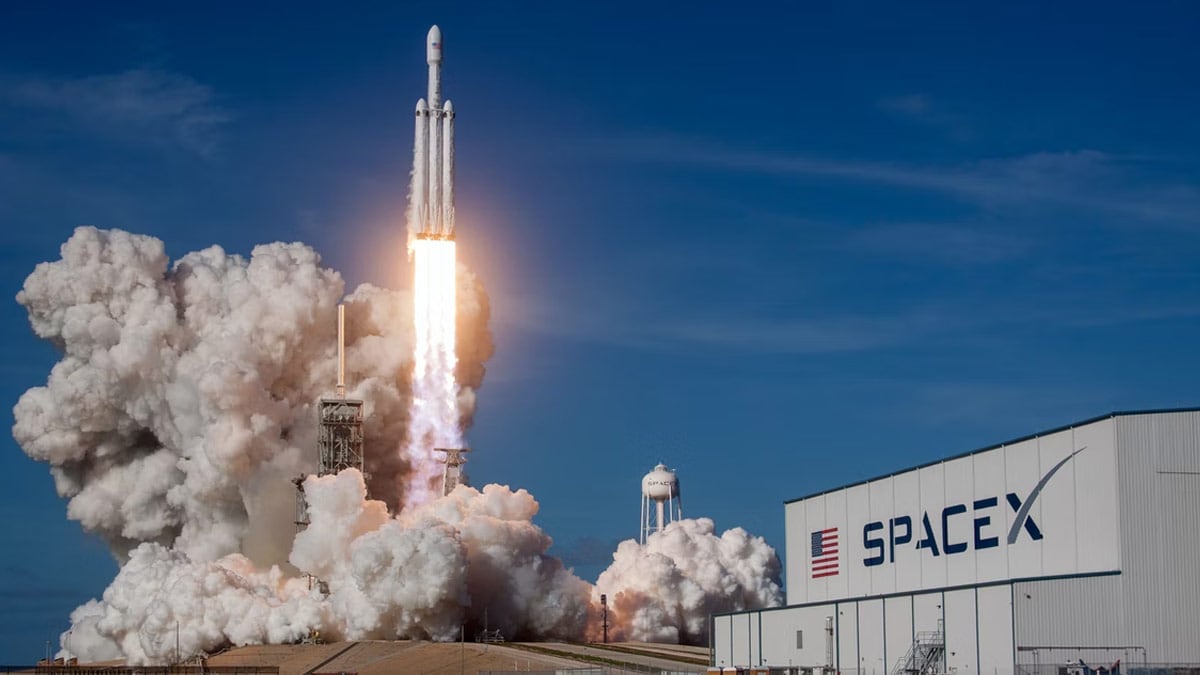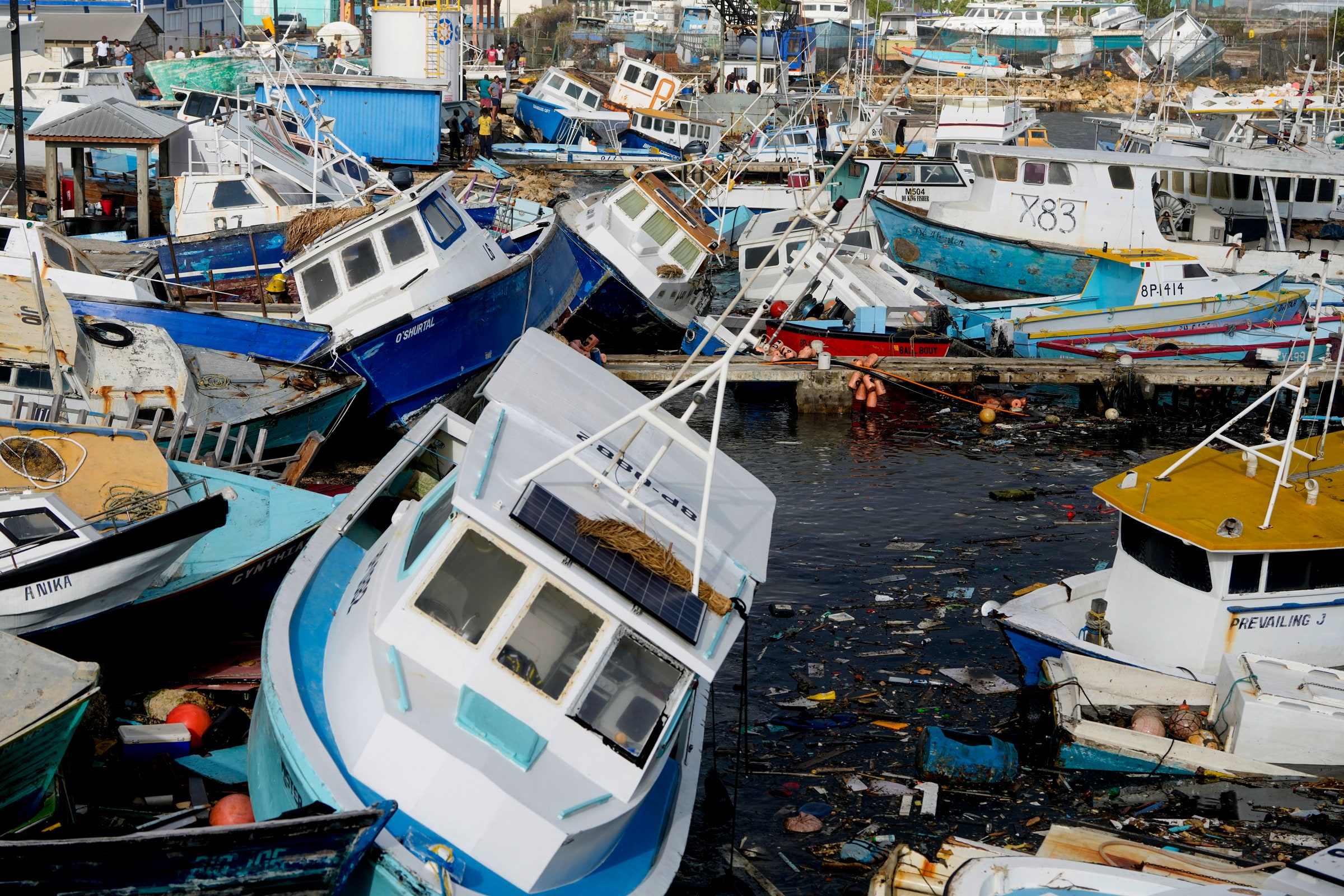
At a recent rally, Donald Trump stated that electric planes would be a bad idea because you couldn’t fly if it was cloudy. I guess “electric” equates to “solar energy” in the former president’s mind—which, you know, is actually great. Just … not so much for air travel.
Oh, solar planes have been around for a while, but they’re probably not what Trump had in mind. These are ultralight aircraft, usually unmanned or carrying a single skinny pilot. It’s very unlikely that you will ever be a passenger on a solar-powered plane that is delayed by clouds.
How can I be so sure? Because physics. Let’s see why.
What Makes a Plane Fly?
The next time you’re riding in a car, stick your hand out the window, flat, with your palm down. You should feel a backward-pushing force from the interaction with the air. Now tilt your hand slightly up—don’t resist, just let the air push your hand up. It feels like it wants to fly away, right? Your hand is just like a plane wing.
What’s really happening here? Let’s focus on one molecule of air interacting with your hand. The molecule starts at rest—its velocity (v) is 0, as shown in the diagram below. Then your moving hand-wing collides with that air molecule and pushes it so that it moves down and forward.
Courtesy of Rhett Allain
That molecule of air changed velocity, which means it accelerated. That means there must be a force (F) in the direction of the acceleration. (Newton’s second law: F = m⋅a, where m is mass.) This force on the air is from the hand pushing on it. However, if the hand pushes on the air, then the air pushes back on the hand with an equal but opposite force. (That’s Newton’s third law, if you’re keeping track.)
So, the result of this interaction between the hand and air will push the hand up and back. With a whole bunch of air molecules, the interactions are all basically the same. The upward-pushing part of this force is called lift. The backward-pushing part is called drag. Lift and drag are just two parts of the same interaction—you can’t have one without the other.
The lift is what we want, because it balances the gravitational force and keeps the plane airborne. However, we also have that pesky drag force. Since this is a backwards-pushing force it will cause the plane to slow down. If you don’t want to slow down, you will need some type of force pushing the plane forward, like a jet engine. We call this thrust. Putting it all together—lift, drag, gravity, thrust—here is a force diagram for a plane flying at a constant velocity:
Courtesy of Rhett Allain
Of course, to create a thrust force, that’s going to take some energy.
Power for an Airliner
So what’s the power consumption of a passenger plane like the Boeing 737? There are two useful methods to estimate the power required to fly at a constant speed. Let’s go through both of these.
The first method is to use the glide ratio. Imagine that your plane runs out of fuel. To maintain the aircraft’s speed, it’s possible to reduce your altitude and lose some gravitational potential energy to counteract the loss in energy due to drag. I don’t have an exact figure, but I think a glide ratio of 17:1 seems plausible for a 737. This means that without power, a 737 would move forward 17 meters for every 1 meter that it drops.
We can use this change in altitude (and gravitational potential energy) to calculate the effect of the drag force. OK, we are going to need some more parameters. Along with the glide ratio, I’m going to use an aircraft mass of 80,000 kilograms and a cruising speed of 225 meters per second (about 500 miles per hour).
Suppose the plane drops a distance of 1 meter—this would be a change in gravitational potential energy of m⋅g⋅h, where m is mass, g is the gravitational field (9.8 newtons per kilogram), and h is the height. This gives an energy change of 7.84 x 105 joules. What about the power? Power is the rate of change of energy: P = ΔE/Δt. We can get the time by looking at the speed of the plane during this glide. For that 1 meter drop, it traveled 225 meters. This gives a time interval of 0.076 seconds. That means the power needed to move at a constant velocity would be 1.0 x 107 watts (1 watt = 1 joule per second). Yes, that’s 10 million watts.
Now for the second method—looking at the jet engines. Of course there are many variations of the Boeing 737, but let’s say we have a plane with two engines that together produce a thrust of 100 kilonewtons at a cruising speed of 225 m/s. Here, we can calculate the “work” done by the engines, which is the product of the force and displacement. In this case, I will pick a time interval of 1 second so that the plane will travel 225 meters (see, that’s easy). I can now find the power as the work divided by the time. This gives us a power of 2.3 x 107 watts. Yes, that’s double our previous estimate, but it’s fine. Let’s go with the lower value of 107 watts, to make the case for a solar plane as strong as possible.
A Solar-Powered Plane
A solar panel converts light energy into electrical energy. The power delivered by a solar panel depends on several factors: the intensity (I) of the light, the size (area) of the panel (A), the angle (θ) of the light, and finally the efficiency (e) of the device. The only tricky part is the angle. Here’s a diagram.
Courtesy of Rhett Allain
The angle at which the light hits the panel, θ, is measured from a line perpendicular to the surface. This means you will get a maximum solar panel power when the light is shining straight-on (θ = 0), since cosine(0) = 1.
OK, let’s do a quick calculation. The intensity of sunlight at the location of the Earth is about 1,361 watts per square meter. So, let’s say our solar panel is 1 meter by 1 meter with an efficiency of 25 percent (which is very optimistic). If the light hits at a 30-degree angle, this solar panel would give us a power of 294.7 watts.
Well, our solar-powered 737 is going to need a lot more power than that. We can calculate the surface area needed to generate 10 million watts. For simplicity, let’s assume the light is perpendicular to the panels (obviously not realistic). With this, we’d need 29,000 square meters of panels.
Just for comparison, the 737 has a wing area of 125 square meters. If it was covered with solar panels it would generate 42 kilowatts. That’s nice, but not nearly nice enough for a passenger airliner. To be specific, it’s 0.4 percent of the power you’d need to remain in the sky.
Bottom line, it’s pretty hard to envision any way of making a solar-powered passenger liner. However, that doesn’t rule out electric airplanes altogether! We might have some nice battery-powered planes someday.
Oh, but what about those real solar-powered planes? The key is to fly slower with a lower mass so that the drag force is smaller. If the wings are big enough, it’s possible to get enough power to fly—until it gets cloudy.




